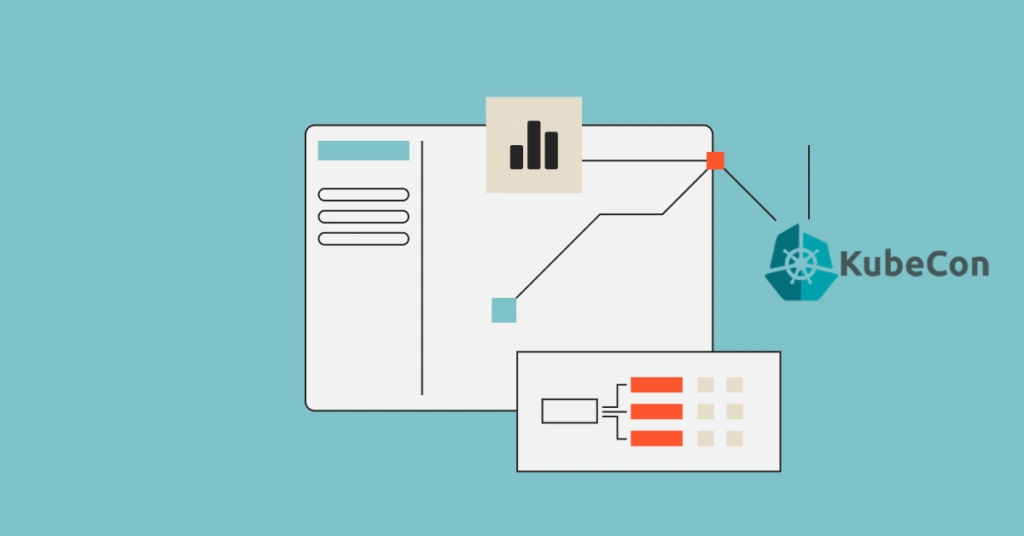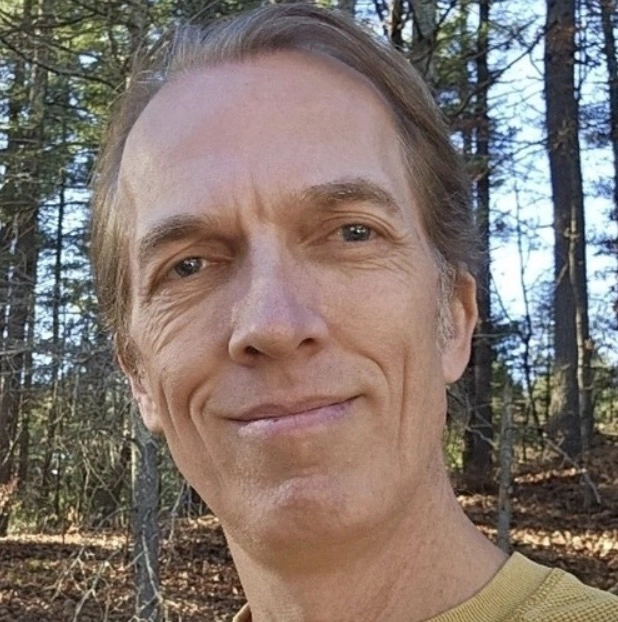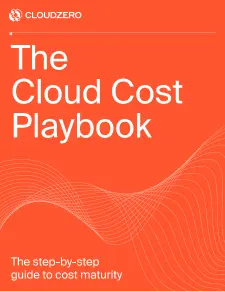KubeCon Atlanta 2025 felt different this year — and CloudZero had a full team on the ground to capture it. Engineers, product leaders, sales reps, and CTO Erik Peterson spent three days embedded across the show floor. Their vantage points were complementary: the outbound conversations, the inbound questions, the demos, the technical deep-dives, and the quieter moments between sessions.
Five perspectives stood out. Senior Software Engineer Rob Hocking spent much of the conference walking practitioners through the engineering inside CloudZero’s Kubernetes capabilities — often the moment conversations shifted from polite interest to genuine engagement.
Principal Product Manager Thomas Evans observed how the overall mood, traffic patterns, and attendee behavior reflected a broader change in the Kubernetes ecosystem itself.
Account Development Representative Ayla Anderson highlighted the energetic side of the conference — the excitement from existing customers who love the product, and the surprise from people who didn’t know Kubernetes cost visibility was even possible.
Jake Landers, Software Engineer II at CloudZero, added a practical, buyer-focused angle: many visitors came not to compare shiny feature lists, but to validate whether a product matched a specific set of checkboxes they had already drafted.
And finally, Larry Advey, Director, Cloud Platform & FinOps, reminded us of a simple but easy-to-overlook truth: engineers do care about costs — they just frame cost work as questions of value and impact.
Together, their experiences pointed to a clear theme: beneath the quieter surface were strong signals about where Kubernetes is headed, what practitioners want, and how the ecosystem is evolving.
Here’s what we learned in depth.
1. Today’s Kubernetes Engineer Is More Technical — and More Selective
Right away, Thomas noticed a shift in the crowd. They were more focused, more selective – not just there looking for swag. They were engineers who resonated with phrases like ‘kubectl delete waste’ (or ‘kubectl destroy cost’ as displayed at the CloudZero booth). The kind of person who walks into KubeCon already thinking about how to eliminate waste in their clusters.
Practitioners were more introspective and less inclined to wander into a booth unless they already sensed something relevant. They scanned with the focus of someone deciding whether a tool fit their piece of the stack.
If it didn’t, they kept moving. It was a clinical filtering process.
Ayla noticed this as well. Coming into her first-ever conference, she expected more noise — more people stopping just to chat or explore. Instead, she saw a crowd that behaved almost like a living search query: highly specific, tightly scoped, and not always interested in anything outside their immediate needs. Most didn’t break stride unless something on the booth or screen signaled technical depth or a direct connection to their day-to-day reality.
When someone did stop, the conversation had a particular rhythm. Attendees wanted to know the architecture, the data model, the execution path, the tradeoffs. It was as if the entire audience had collectively moved up a level in technical seniority.
KubeCon has always been an engineer-heavy event, but this year felt like another step toward specialization — the sort of specialization that makes surface-level messaging nearly invisible.
Jake put it simply: most visitors came with a checklist in mind. Bigger feature sets left little impression — attendees were more interested in whether a product checked the boxes that mattered. If the product couldn’t demonstrate a capability the attendee expected, the conversation would end quickly.
This explains the emphasis on precise demos and the quick shift from polite curiosity to decisive judgment. Larry sharpened this point: engineers do care about cost, but they ask it in terms of value and impact. They want to know, ‘Was it worth it?’
Engineers do care about cost, but they ask it in terms of value and impact. They want to know, ‘Was it worth it?’
Ayla, meanwhile, noticed the contrast between selective attention and what happened when practitioners found something real. Existing CloudZero customers stopped by not to browse, but to tell her how much they loved the product, what they relied on, and what they hoped to see next. And people new to CloudZero quickly shifted to enthusiasm once they saw what the platform actually does.
Thomas also described lower foot traffic and breakout sessions being upstairs. That wasn’t a sign of fading interest; it suggested more that attendees weren’t there to browse. The booths solving real operational problems earned their attention.
2. The K8s Ecosystem Is Maturing As Surface Innovation Slows
As the team compared notes throughout the week, another theme kept surfacing: the expo hall felt quieter not only because the attendee persona had shifted, but because the ecosystem itself was changing. Thomas, who has attended several KubeCons, put it plainly: many vendors are still trying to figure out how to make money in this segment.
Companies that once positioned themselves as “Kubernetes tooling” vendors have either pivoted, narrowed, or broadened their story. A few admitted it’s tough to grow in a space where most core gaps are already filled. The obvious categories are saturated. And the tools that once felt novel have started to blend into one another.
Companies that once positioned themselves as “Kubernetes tooling” vendors have either pivoted, narrowed, or broadened their story.
On the floor, you could sense this. There were fewer big swings and attempts to redefine the category, and more incremental additions, wrappers, and reworkings of known patterns. K8s has reached a stage of maturity where surface-level innovation has less room to breathe.
But that doesn’t mean innovation has disappeared. If anything, the real breakthroughs are more visible now. You might come across a booth working on something unmistakably new — a build system rethought from first principles, or a cluster orchestration approach that didn’t feel like another iteration of what came before. Those stood out — rare and clearly valuable to today’s K8s engineers.
Jake saw a related buyer pattern: multiple prospects using competing tools expressed frustration with their current cloud cost platform, which made them more open to alternatives. This buyer dissatisfaction is a signal not of market weakness, but of opportunity for vendors who can deliver depth and reliable outcomes.
In short: the Kubernetes ecosystem is clearing room for the deeper, more demanding engineering that will define whatever comes next. And vendors who want to remain relevant will have to decide whether they’re prepared to solve hard problems all the way down, not just wrap or re-visualize them.
3. Real Engineering Depth Transformed Every Conversation
The strongest signal of the week came from what happened when someone paused long enough for Rob to walk them through CloudZero’s features. When Rob explained how the agent works — its low overhead and how it reconstructs pod-level behavior with precision — the tone shifted immediately. Attendees leaned in, their questions sharpened, and the conversation moved to deep, interested technical dialogue.
Ayla also saw people come alive once they understood what they were looking at. When the demo contradicted those assumptions, their skepticism evaporated. One attendee even returned with their manager to see it for themselves.
Jake’s experience echoed and extended this. He saw that buyers comparing K8s cost tools cared less about flashy features — and more about whether the allocation algorithm matched their needs. He was frequently shown graphs from competing tools and asked whether our allocation algorithm could group by certain dimensions — questions our demos handled well, which consistently impressed attendees.
Larry added two reinforcing points: first, engineers do care about cost and are eager to engage when cost work maps to measurable value; second, our agent, analytics, and optimization capabilities notably lower the barrier to doing that work.
First, engineers do care about cost and are eager to engage when cost work maps to measurable value; second, our agent, analytics, and optimization capabilities notably lower the barrier to doing that work.
He also called out the practical payoff: the show produced hundreds of new contacts and a raft of in-person customer engagements — tangible signs that the market needs and values what we do.
These weren’t reactions to marketing. They were responses to real engineering — to seeing, in action, what it means to ‘kubectl delete waste’ at scale. What resonated wasn’t the what but the how.
That shift repeated itself consistently throughout KubeCon. In a conference filled with highly selective, technical practitioners, the one thing that reliably broke through was depth of engineering and of intent.
Rob demonstrated it every time he opened a terminal or diagram. Ayla saw the emotional impact of that depth on people who didn’t expect to find something new. Together, their observations made one thing clear: the K8s community values authenticity, rigor, and solutions built from first principles — and the ecosystem is responding.
Kubernetes Is Entering A Quieter, Smarter, More Demanding Era
KubeCon Atlanta didn’t feel like a fading show or a cooling market — it felt like a maturing ecosystem. The practitioners are more selective and more specialized. The vendors are more sober about where real opportunity lies. And the market as a whole is raising its expectations for what counts as meaningful innovation.
That combination creates a new kind of environment — one where attention is scarce, quality is obvious, and engineering depth is the currency that matters. And in that environment, the conversations around CloudZero’s Kubernetes solution were telling. When people saw the underlying work, they understood both what CloudZero does and why it matters.
Larry’s final note is a reminder of the human payoff: engineers care about cost because it’s their path to showing impact. When they can say, ‘It was worth it,’ they not only protect their systems — they also advance their careers.
Atlanta made that clear. Now the job is to keep building — deeper, sharper, and always aligned with the engineers raising the bar.








